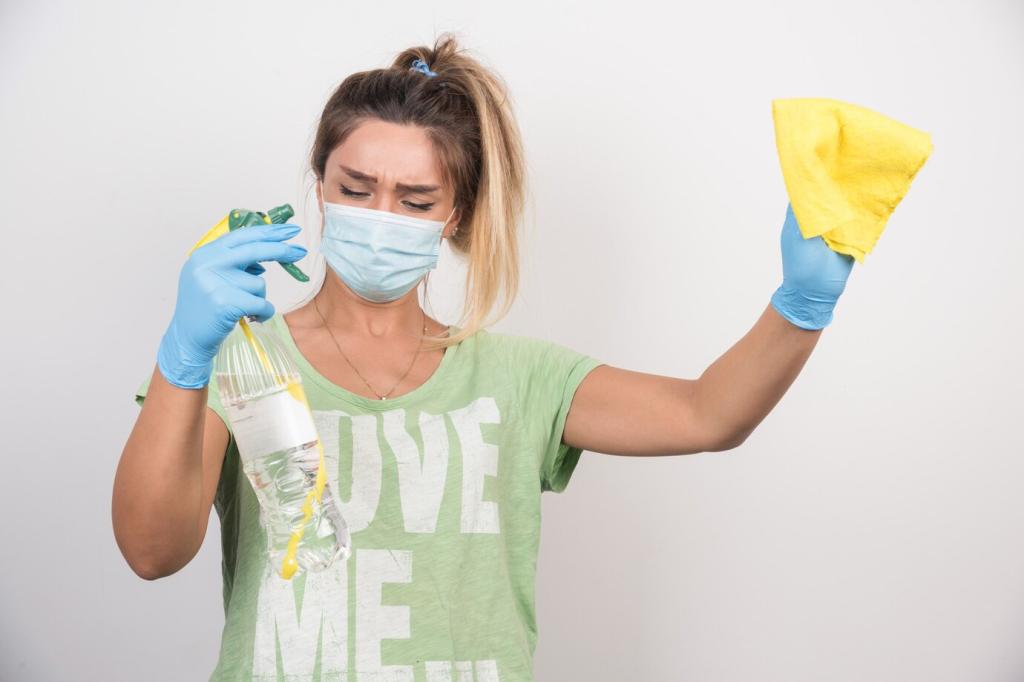Shine Naturally at Home: Plant-Based Furniture Cleaning Products
Chosen theme: Plant-Based Furniture Cleaning Products. Welcome to a home where polish smells like citrus groves, routines feel kind to hands, and every surface gleams without compromise. Subscribe, share your wins, and let nature elevate your favorite pieces.

Plant-derived surfactants like decyl glucoside lift grime, while citrus d-limonene dissolves sticky residues and plant acids such as citric or acetic acid cut mineral film. Balanced formulas emulsify oils, suspend dust, and rinse clean without leaving silicone build-up on treasured surfaces.
Why Go Plant-Based for Furniture Care
Wood Wisdom: Nourish, Don’t Strip
Sealed wood appreciates neutral, plant-derived microemulsions that lift soils without swelling grain. Unfinished or shellac-coated pieces can dislike strong acids, so keep vinegar highly diluted or skip it entirely. Always spray a cloth, not the surface, and dry immediately with a separate, clean towel.


Wood Wisdom: Nourish, Don’t Strip
Jojoba’s wax esters resist rancidity and mimic natural oils; thin coats restore luster without tack. Polymerizing linseed oil needs patience and very light application. A whisper of carnauba from palm leaves adds durable sheen. I revived my grandfather’s oak desk this way—its grain now glows like warm honey.
Upholstery and Fabrics: Fresh by Nature
Hydrosols like lavender or rosemary add a whisper of cleanliness without overwhelming rooms. Botanical enzyme blends help break down odor-causing residues in cushions after movie nights. Keep scents light around kids and pets, and mist from a distance to avoid overwetting fabrics and batting.


This is the heading
Lorem ipsum dolor sit amet, consectetur adipiscing elit. Ut elit tellus, luctus nec ullamcorper mattis, pulvinar dapibus leo.

This is the heading
Lorem ipsum dolor sit amet, consectetur adipiscing elit. Ut elit tellus, luctus nec ullamcorper mattis, pulvinar dapibus leo.
Favor clear labels listing both common names and INCI, like decyl glucoside or sodium citrate. Watch for vague “fragrance” and prefer essential oil blends with disclosed allergens. Gentle preservatives such as potassium sorbate or sodium benzoate make sense; skip harsh isothiazolinones when alternatives are available.
Smart Shopping: Labels, Claims, and Proof
USDA Certified Biobased Product, ECOCERT, COSMOS Natural, and EPA Safer Choice help verify plant-derived content or safer chemistry. No badge is perfect, but together they guide better picks. Bonus points for bottles declaring recycled content and transparent dilution or concentrate ratios on the back label.
Smart Shopping: Labels, Claims, and Proof
Room-by-Room Plant-Powered Routines
Living Room Glow in Ten Minutes
Dust shelves and tables with a dry cloth, then spot-clean fingerprints using a diluted plant-based glucoside spray applied to the cloth. For sticky spots, a touch of citrus solvent helps. Share your speed-clean playlist and we’ll build a community soundtrack together.
Dining Table Etiquette for Everyday Messes
Before meals, wipe with a neutral, plant-derived cleaner that leaves no oily residue. Skip strong essential oils on bare wood and lean on placemats for hot dishes. End the week with a thin botanical conditioner if the surface looks thirsty—tell us what schedule works for you.
Bedroom and Nursery Calm
Choose fragrance-free or very lightly scented plant-based formulas near cribs and bedside tables. Label dilutions and dates, and use lockable triggers away from curious hands. Parents, what gentle routine keeps nightstands clean between stories and bottles? Add your tip and subscribe for family-focused checklists.
Sustainability Beyond the Bottle
Concentrated, plant-based cleaners ship less water and reduce packaging. Measure carefully for consistent results, and use local refill stations when possible. I switched last spring and cut under-sink clutter in half. Tell us your favorite refill shop and we’ll map reader recommendations.
Sustainability Beyond the Bottle
Reach for reusable cotton cloths washed fragrance-free, wood-handled brushes with plant bristles, and sturdy glass or aluminum sprayers. If you use microfiber, capture fibers with a wash bag and air-dry. What tools feel best in your hands? Share links and honest experiences below.
